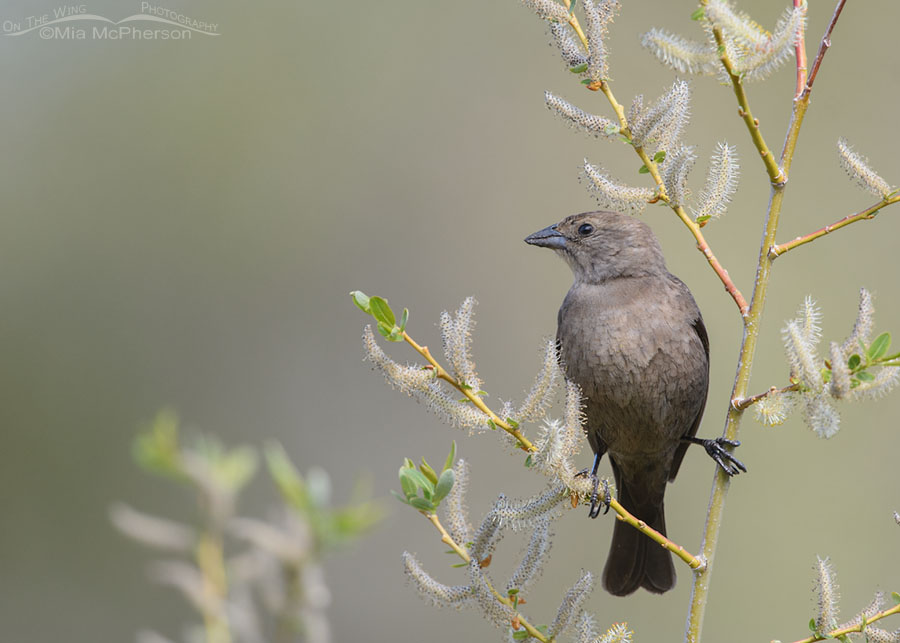 Female Brown-headed Cowbird with willow catkins – Nikon D500, f6.3, 1/500, ISO 500, +0.3 EV, Nikkor 500mm VR with 1.4x TC, natural light
Female Brown-headed Cowbird with willow catkins – Nikon D500, f6.3, 1/500, ISO 500, +0.3 EV, Nikkor 500mm VR with 1.4x TC, natural light
Late last month I photographed this female Brown-headed Cowbird surrounded by willow catkins in East Canyon in the Wasatch Mountains. I know that Brown-headed Cowbirds aren’t charismatic like owls or hummingbirds are or as colorful as orioles and warblers but I still find them to be subjects that I enjoy having in my viewfinder. Plus watching Brown-headed Cowbirds in the early spring can show me a thing or two.
Brown-headed Cowbirds are interspecific brood parasites. Female Brown-headed Cowbirds make no nests of their own and lay their eggs in the nests of other bird species who then raise the young cowbirds. In the spring if I pay attention to the females of this species that are looking for nests to lay their eggs in I can locate the nests of other species of birds I might not normally have found or seen.
However, that causes a conundrum within me. On one hand I can hope that the cowbird doesn’t lay an egg in the host birds nest because it will most likely mean that they won’t raise young of their own during the breeding season and will be run ragged trying to feed a cowbird chick. On the other hand, if the female cowbird doesn’t lay her eggs and the host birds don’t raise them we’d lose cowbirds as a species.
Once upon a time Brown-headed Cowbirds used to live primarily in the Great Plains then they expanded their ranges in all directions in the 19th and 20th centuries during a time period when humans were cutting down the forests to the east, west, north and south of the Great Plains. Cowbirds typically avoid heavily forested areas but once those forests were chopped down and the lands that used to be forested became open fields, farm lands, and residential areas it made it easier for these birds to expand their range. Put simply, humans made it easy for Brown-headed Cowbirds to move out of their historical range and into new ones.
I can’t fault this species for taking advantage of a mess that we humans have caused and I won’t let knowing that Brown-headed Cowbirds are brood parasites stop me from photographing them. I simply appreciate them as they are and I am happy that I had this female in my viewfinder one morning in May.
Life is good.
Mia
Click here to see more of my Brown-headed Cowbird photos plus facts and information about this species.


First and foremost…I love the detail and textures in the shot. And your narrative is very informative. I must admit, however, that I share everyone’s angst about the freeloading nature of cowbirds and the harm they bring to other species. Thanks Mia.
While the cowbird gets the blame, as usual our species part in the impact on other birds numbers is significant. And the driving force.
Over a dozen species of Warblers and Vireos now on the brink, directly traceable to Cowbird parasitism
via woodland habitat disintegration.
I know it is a mixed bag with brood parasites. I still like cowbirds. I love the photo with with the catkins.
Exquisite shot! The bird, the catkins, the background! Wow!
There is an awful lot of wisdom in that last paragraph. Thanks for sharing your thoughts.